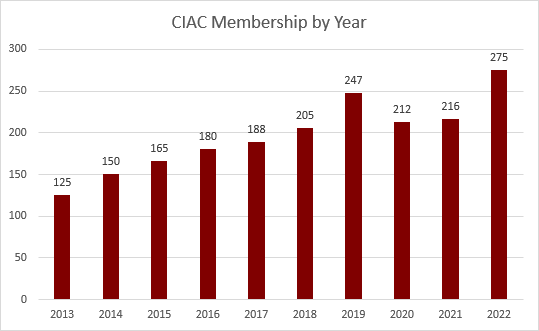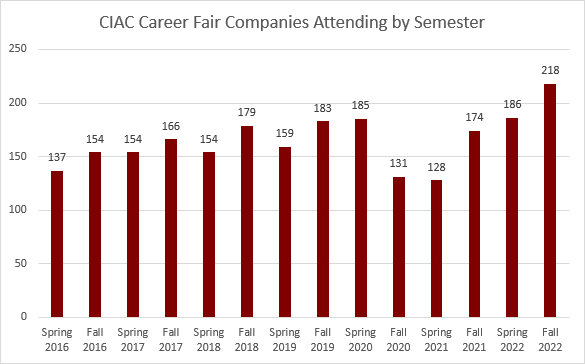The Construction Industry Advisory Council (CIAC) connects Texas A&M construction science with the best construction industry professionals in the nation.
Construction Industry Advisory Council
Goals & Objectives
Industry Relations Office Goal
We will maintain connections with communities, industry, professional associations and accreditation groups through engagement in public service, public relations, internships and student chapters.
Industry Relations Office Objectives, Strategies and Metrics
Objective 1: Grow and diversify the Construction Industry Advisory Council (CIAC) membership and internship providers.
Strategy: CIAC members reach out to non-member companies to encourage their memberships.
- Fall 2016 – Establish benchmarks of the diversity among the CIAC membership in regards to the type of company and business sector. Brief the CIAC membership on the need for increased facility management internships to address the expected growth in the facility management minor.
- Fall 2016 – Spring 2017 – Develop a list of potential venues and dates (conferences and meetings) for those professional and trade associations that are not represented by the current CIAC membership. Develop a multi-year plan to participate in such venues in order to promote construction science and facility management internships.
- Fall 2017 – Extend associate membership invitations to professional and trade organizations to increase diversity, with invitation to attend the 2018 CIAC meetings.
- Spring 2018 – Host a meeting or conference for a facility management or facility owner professional or trade association.
- Fall 2018 – The industry relations coordinator will brief the CIAC members on the diversity benchmarks established for the CIAC membership, and task the membership committee to identify target companies to increase diversity in memberships.
Metrics: By 2021, the CIAC will increase the diversity of CIAC members to include a 20% increase compared to the Fall 2016 benchmarks.
Assessment
Industry Relations Biennial Reports
CIAC
The Construction Industry Advisory Council (CIAC) was established on January 1, 1998. The purpose of the CIAC is to support and promote the Texas A&M Construction Science Department and its students. An executive committee guides the activities of the CIAC. The executive committee consists of the president, vice president, and chair of each subcommittee.
- CIAC annual report which includes members, activities, and the budget.
- CIAC Bylaws (PDF)
Membership
Business entity membership is open to construction and construction related companies and include the largest general and specialty contractors in the state of Texas. Growth in the CIAC membership is shown below:

Career Fairs
The Department of Construction Science conducts two career fairs each fall and spring semester. The first career fair is scheduled approximately three weeks into the semester and is reserved for CIAC members only. It is the largest department level career fair on the Texas A&M campus. Over 70% of students acquire their internship or job offer upon graduation from this career fair. The second career fair scheduled approximately two week later is for non-CIAC member companies.
The participation of companies in the CIAC and non-CIAC member career fairs is shown below:

Internships
The Construction Science Department’s internship program is a model program on the Texas A&M campus:
- Required for graduation (Junior-Year 2, or Senior-Year 1)
- Semester long (15-weeks)
- Paid (Average $16.00/hour)
- Full-time employment (40 hours/week minimum)
- Full industry support (over 80% are with CIAC member companies)
- Writing Intensive (100% of grade based upon weekly reports)
Many students combine their semester long with a summer job thus gaining 25-weeks of enhanced educational experience prior to graduation.
Over 60% of students earn a job offer from their internship company.
Student evaluation of their internship experience is shown below: